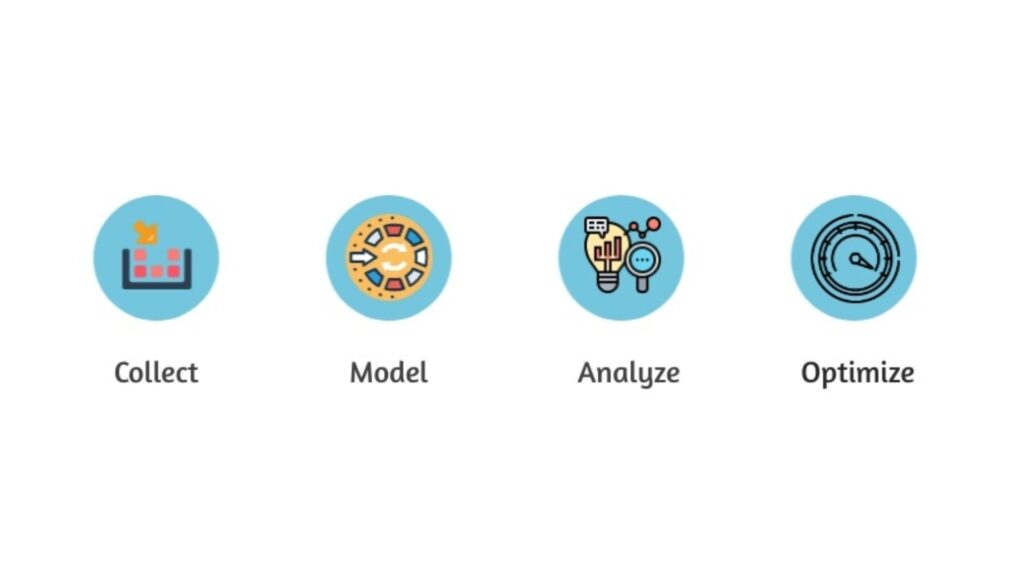The world of marketing is all about reaching the right audience, increasing brand awareness and ultimately boosting sales and profits. But how do you know which marketing efforts really work and which don’t? How can you determine the right mix of marketing channels and activities to get the most return on your investment? That’s where Marketing Mix Modeling (MMM) comes in. In this blog, we take a closer look at what MMM is, how it works and why it is an essential tool for modern marketers.
Marketing Mix Modeling, also known as MMM, is an analytical method that helps marketers understand and optimize the effectiveness of their marketing spend. It enables marketers to determine which marketing channels, campaigns and activities have the greatest impact on achieving their business goals. Through advanced statistical modeling and data processing, MMM can provide insights that help make informed decisions based on facts and figures rather than gut feelings.
In a modern multi-channel marketing campaign, you can use radio advertising, Google Ads, paid and organic social media, public relations, outdoor advertising (bus stops, billboards, etc.), webinars, co-sales partnerships, promotions and more. That’s a lot to keep track of! Besides, the more different channels and complexity you add to your campaign, the more people you will reach. (Ideally, people from your target audience.) But with more different channels, it will also become more difficult to keep track of the contribution of each. If you cannot measure the contribution of your channels, you may not realize that some of your marketing spend is more efficient than others.

In today’s competitive business environment, it is critical to use your marketing spend as effectively as possible. Wasting money on ineffective marketing channels can negatively affect a company’s profitability. MMM offers several benefits that help marketers improve their strategies:
MMM is based on hard data and statistics. It analyzes historical marketing and sales data to determine which activities contributed to successful results and which did not. This allows marketers to make more informed decisions instead of relying on intuition or guesswork.
Using MMM, marketers can effectively allocate their marketing budget to the most profitable channels and campaigns. This maximizes Return on Investment (ROI) and helps avoid wasted resources.
MMM considers the long-term effects of marketing efforts, not just immediately measurable results. This allows marketers to better understand the value of brand-building activities and their long-term impact.
MMM examines how different marketing channels influence each other and what synergies can be exploited to improve performance. For example, it can show how a combination of Google ads and Instagram ads affect sales. (Multi Touch attribution, a topic for a future blog!)
MMM is flexible and can be used to adapt the effectiveness of marketing strategies to changing market conditions, competition and customer behavior.
The process of Marketing Mix Modelling involves several steps to obtain accurate and actionable insights. Here are the key steps:
A successful MMM analysis begins with clearly defined objectives. What do you want to achieve with your marketing efforts? Want to increase sales, increase brand awareness or promote customer loyalty? Setting measurable goals helps focus analysis and determine relevant KPIs.
Collecting accurate and comprehensive data is critical to MMM’s success. Marketers need to collect data on their marketing spend, various marketing channels, sales performance, competition and other relevant factors.
Before the data can be analyzed, they must be prepared and processed. This includes cleaning up the data to correct any inaccuracies or inconsistencies.
In this phase, analysts develop statistical models that can capture the relationship between marketing efforts and sales performance. These models can include various techniques, such as linear regression, time series analysis or machine learning algorithms.
The model is tested and validated to ensure that it is accurate and reliable. This includes comparing the model’s predicted results with historical data to assess accuracy.
Once validated, the model can be used to analyze different scenarios and answer “what if” questions. For example, marketers can test how changes in the marketing budget or shifts between channels can affect sales results.
The insights gained are used to adjust and optimize marketing strategies. Marketing simulations can be used to evaluate the impact of changes before they are actually implemented.
MMM is an ongoing process. After implementation, marketers continue to monitor and adjust the performance of their marketing mix based on new data and changing conditions.
How do I get started with Marketing Mix Modeling?
The best way to get started with marketing mix modeling is to use an easy-to-implement automated SaaS solution. Instead of having to develop custom software for MMM, a SaaS solution is much easier to implement and understand.
Our favorite MMM tools:
Discover a database of 42 brands here (TikTok, DoorDash, McDonald’s, H&M, Amazon, Airbnb, Uber…) and how they approach their marketing measurement and attribution. (You’re welcome!)
https://airtable.com/shrzPkZvLTZtcsnbI/tbl3DWXXfhWZ2sTNT
Marketing Mix Modeling is a powerful tool that helps marketers improve their marketing strategies and use their marketing budgets effectively. Through advanced data processing and statistical models, MMM provides valuable insights into the effectiveness of various marketing activities, channels and campaigns. These insights enable marketers to make informed decisions and optimally allocate their marketing budgets to the most profitable channels.

Co-Founder & CCO | Lead On Performance Marketing
Digital Marketing Consultant building a bridge between digital & data
That way, you’ll always stay on top of the latest digital trends and developments, and then be able to use them yourself!
Oudenaardsesteenweg 256 box 5
9420 Erpe-Mere
Monday - Friday.
8 AM - 6 PM
Copyright 2024 Lead On – BTW BE 0771.335.288 – Privacy – Terms and conditions